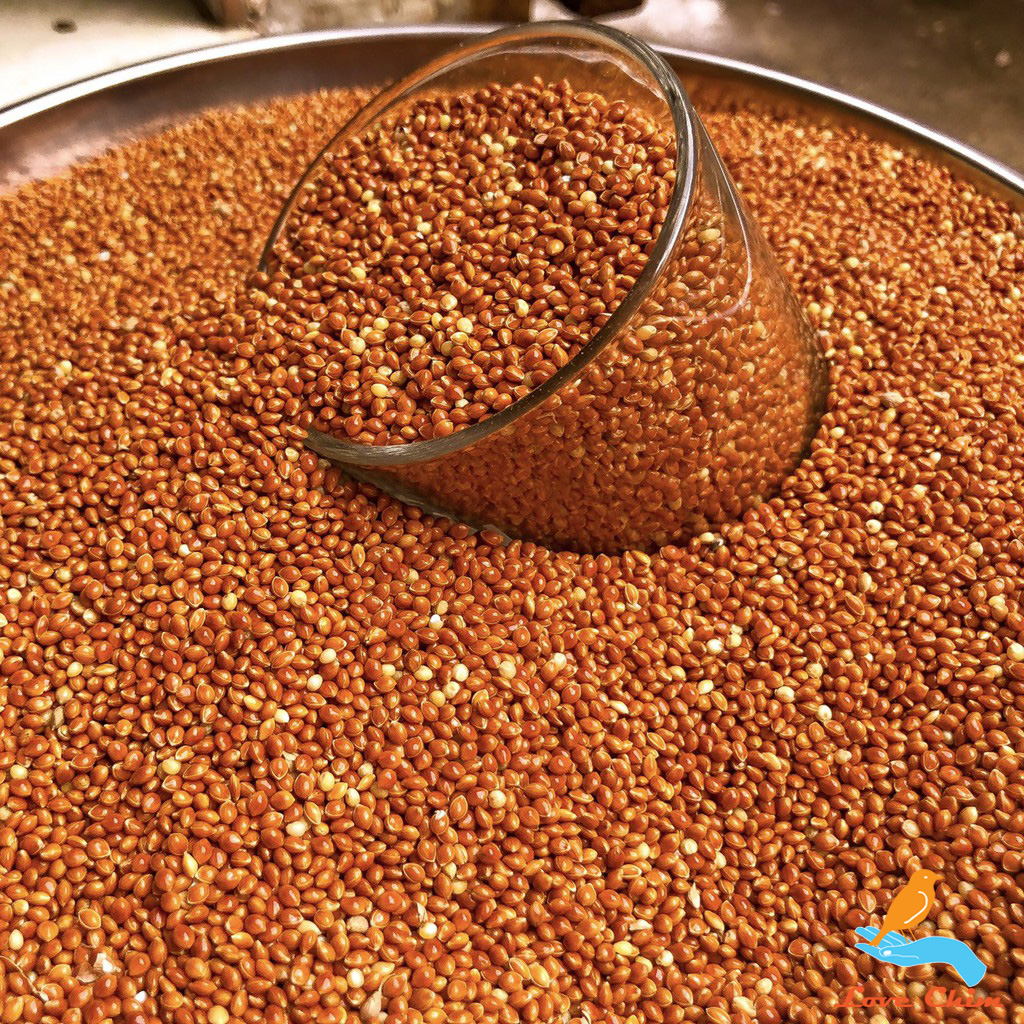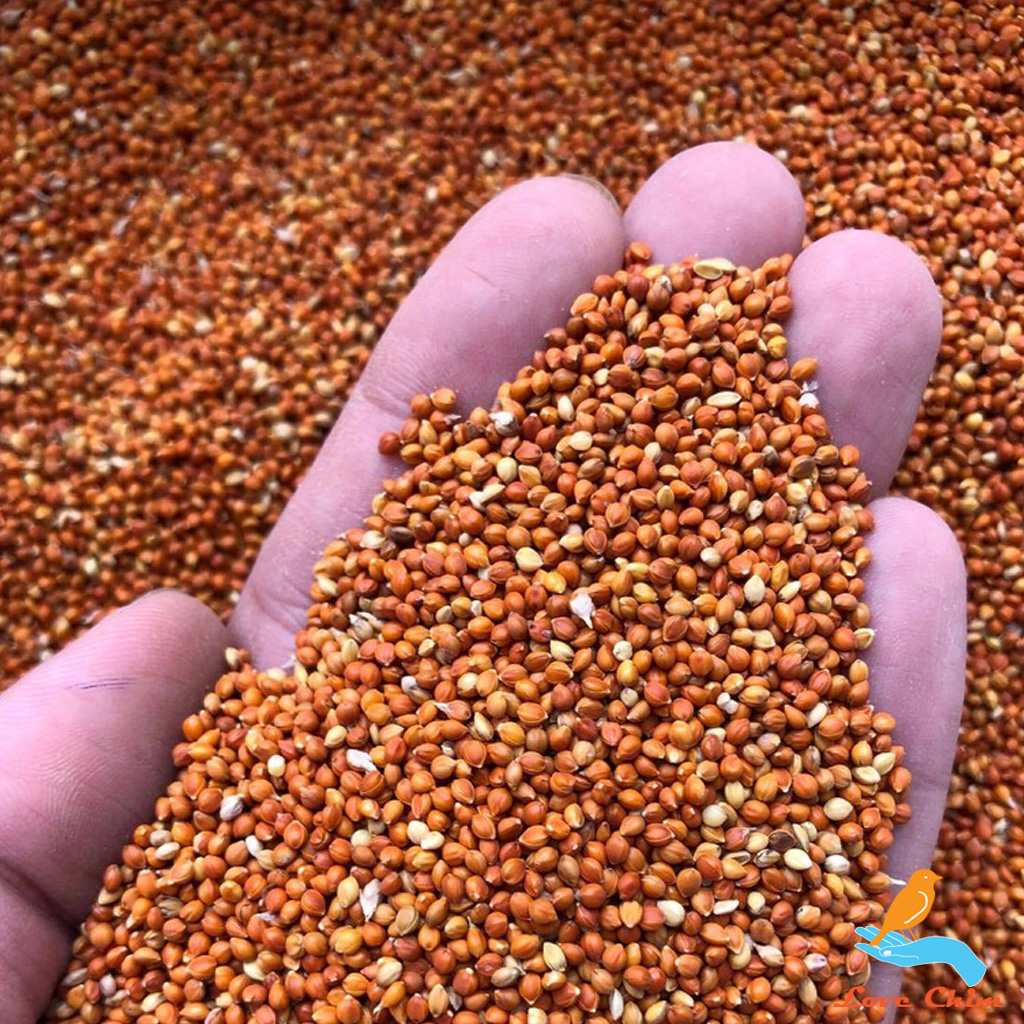latest news
What kind of cereal should you give your parrot pet friends?
Milo and millet are similar-sounding words that can be confusing. Parrot pet But understanding the difference between these two words and their meanings is crucial if you want to make the right choice for the birds in your garden.
In short, you need to know that milo, or sorghum, is a type of millet. But it is not the best option for feeding birds. Other types of millet are much better if you want to attract and support as many birds in your garden as possible.

Milo is a small-grained, usually early-grained, drought-tolerant sorghum with a compact, bearded head of a large red seed. It comes from the bichromatic sorghum grass, which is grown for seeds. This type of grain is commonly known as sorghum but is also known as large millet, guinea corn or milo.
Millet is the name given to a group of different small seed grasses that are grown worldwide as cereal or cereal crops. Milo, or sorghum, is just one of the grasses in this group.
So while all milo is millet, not all millet is millet.
- In addition to sorghum, millet also refers to other grains and the plants to which they come.
- The most common cultivated millet is pearl millet, Centrus americanus, also known as Pennisetum glaucum. About 50% of the world’s total millet production is pearl millet.
- Some other factories also produce grains called millet. Eleusine coracana, or finger millet, Panicum miliaceum, also known as proso millet, common millet, and other names, and Setaria italica, or foxtail millet, are also important millet species.
Is sorghum and millet the same?
Sorghum, also known as milo, is one of the grasses described as millet. But remember, as mentioned above, there are several other millets. So when you buy millet, you can buy sorghum, but you may not.
It is important to understand whether you are buying milo or another type of millet because this will determine which birds will eat the bird food you provide and which will not.
Do birds eat Milo/sorghum?
Milo, or sorghum, is not necessarily the best option for backyard bird feeders because it is only eaten by larger birds, usually ground feeders. It will not be consumed by smaller birds that you may want to attract to the bird feeder.
Do birds eat other millet?
Other smaller millet seeds are much more common with smaller backyard seed-eating birds that you may want to attract into your space. So, these grains are a much better option for feeding birds in your garden if you want to attract as many smaller seed-eating birds as possible.
What birds eat sorghum and other millet?
Many birds eat sorghum or milo. However, these are usually larger species such as wild turkeys, pheasants, large pigeons and pigeons, grackles, cowbirds and large western jays such as western rags and Steller jays.
Smaller millets are eaten by more species that you may want to attract into your backyard, including American crows, blue jays, cardinals, Carolina red lords, pigeons, juncos, sparrows, starlings, thrashers, and towhees, for example. Sparrows and other smaller birds can also eat some millet when it is offered.

It is important to remember that different birds will like and may eat different types of millet. So, consider which species you want to keep when choosing which millet to place on the ground in your garden or bird feeder.
Is millet good for birds?
All millets are an excellent source of supplementary food for all birds that eat them. It provides them with a good source of protein and the energy they need.
They are very nutritious and rich in magnesium, phosphorus, calcium and essential B vitamins, high in good carbohydrates and low in fat, with plenty of vegetable fiber for easy digestion.
What type of millet is in Bird Seeds?
The key to providing the best possible diet for birds lies in choosing the right type of millet for the bird you want to keep.
Bird seed mixtures usually contain milo, which is cheap and affordable. These larger particles are often used as fillers in cheaper blends. But, as mentioned above, this is not the best option if you want to attract as many birds as possible because many birds will not eat these larger grains of sorghum.

Commercial seed mixtures also often contain other types of millet. Most commonly, these are proso millet (which comes in a variety of red or white), foxtail millet and/or pearl millet.
Which millet is best for birds?
Remember, milo is not the best choice for most garden birds, so it’s best to avoid mixing with milo if you want to provide as many different birds as possible.
Proso millet (Panicum miliaceum) comes in two different types: commonly known as red millet and white millet. Of these two, most birds seem to prefer the white variety, containing 12.5 grams of protein, 70.4 grams of carbohydrates, 5.2 grams of fiber, and 206 milligrams of phosphorus per 100 grams of seeds.
Another good option for wild birds is Foxtail millet. It contains 12.3 grams of protein, 60.2 grams of carbohydrates, 4 grams of minerals, 6.7 grams of fiber, 290 milligrams of phosphorus, and 31 milligrams of calcium per 100 grams of seeds.
Pearl millet also attracts a wide range of birds. It contains 11.8 grams of protein, 67 grams of carbohydrates, 2.3 grams of fiber, 240 milligrams of phosphorus, and 42 milligrams of calcium per 100 grams of seeds.

A mixture that contains one or more of these three options, along with other nuts and grains, but without milo or red millet, is the best option when feeding birds in your garden.
However, keep in mind that millet should only be provided in moderation, along with other protein-rich nuts such as sunflower seeds, nyger seeds, etc.
Supplemental feeding should only be considered once you have ensured you are providing the birds with a healthy habitat and diet through growing in your garden.
Natural food sources should make up the majority of a bird’s diet, so planting the right native species for the birds in your area is always the most important step to doing the right thing for the birds in your garden.
How to feed millet birds
Since many birds like millet as food for the ground, it’s best to spread some millet on the ground in your garden in moderation so that it doesn’t rot or attract other pests.
You can also add millet to the feeder for hanging birds, but it should be noted that many species that eat it may not choose to eat these special grains.

Millet (except for milo) can also be a beneficial grain to add to suet plates made with melted fats and dry ingredients such as nuts and seeds, which can be great food for birds in winter. Whether this is a good idea will depend on the specific birds in your garden.